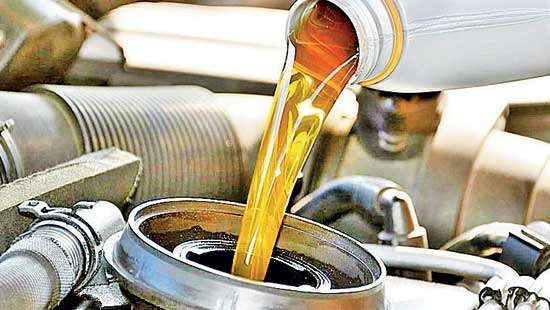Reply To:
Name - Reply Comment

 Sri Lanka’s lubricant market contracted in the second quarter of the year on a year-on-year (YoY) and a quarter-on-quarter (QoQ) basis, reflecting the reduced activity level in economy, following the unprecedented economic crisis that gripped the country last year.
Sri Lanka’s lubricant market contracted in the second quarter of the year on a year-on-year (YoY) and a quarter-on-quarter (QoQ) basis, reflecting the reduced activity level in economy, following the unprecedented economic crisis that gripped the country last year.
As per the data released by the lubricant industry’s shadow regulator, the Public Utilities Commission of Sri Lanka (PUCSL), total lubricant sales volumes fell 11.67 percent to 9,778.35 kilo litres (KL) in the second quarter (2Q23) from the corresponding quarter of last year.
On a QoQ basis, the sales volumes dropped 5.93 percent, from 10,395.19 KL in 1Q23.
In 2Q23, sales of automotive oils declined by 9 percent YoY to 7,124.52 KL, while industrial oils fell 29.55 percent YoY to 1,443.58 KL. Marine oil sales also declined 1.17 percent YoY to 936 KL. However, grease volumes rose 12.12 percent YoY to 274.2 KL.
The PUCSL attributed the drop in automotive oil sales “to shifting consumer preferences, altered market demand or fluctuations in the automotive sector”. Since April 2019, Sri Lanka has banned the importation of motor vehicles, due to its fragile external sector.
The substantial decline in industrial lubricant sales was attributed to “contraction in industrial activities, changes in manufacturing processes or evolving customer requirements”. Sri Lanka’s economy is estimated to have contracted 3.1 percent in 2Q23.
The PUCSL said the increased sale of greases may have been “driven by increased demand for specific applications or effective marketing strategies”.
Meanwhile, Chevron Lubricant Lanka PLC retained its market leadership, with a market share of 45 percent (45.64 percent in 2Q22), with sales volumes of 4,400.28 KL in 2Q23. Lanka IOC PLC had the second biggest market share, with 21.35 percent (26.73 percent in 2Q22), with sales volumes of 2,087.59 KL.
Laugfs Lubricants Limited ranked the fourth, in terms of market share of 5.77 percent (4.86 percent in 2Q22), with sales volumes of 564 KL, while Ceylon Petroleum Corporation had the seventh largest market share of 2.75 percent (3.48 percent in 2Q22), with sales volumes of 269.27 KL.
Smaller players like Exxon Mobil and Toyota gained market share during 2Q23, with their focus on premium segments.
Despite the healthy market shares Chevron and Lanka IOC were able to sustain, their revenue market shares remained at 36.7 percent to Rs.4.71 billion and 15.5 percent to Rs.1.99 billion, respectively, compared to 42.6 percent to Rs.5.23 billion and 20.71 percent to Rs.2.54 billion a year ago.
The decline in sales value could be attributed to the recent reduction in sales prices.
Presently, there are four companies authorised to import, export, blend, produce, sell, supply or distribute lubricants and greases and 22 companies are authorised to import, export, sell, supply or distribute lubricants and greases.